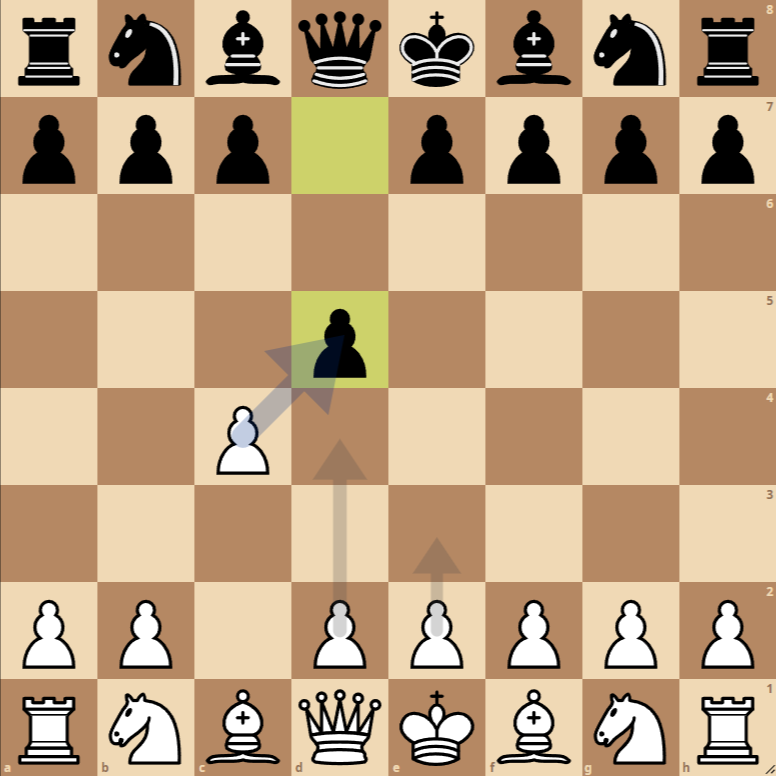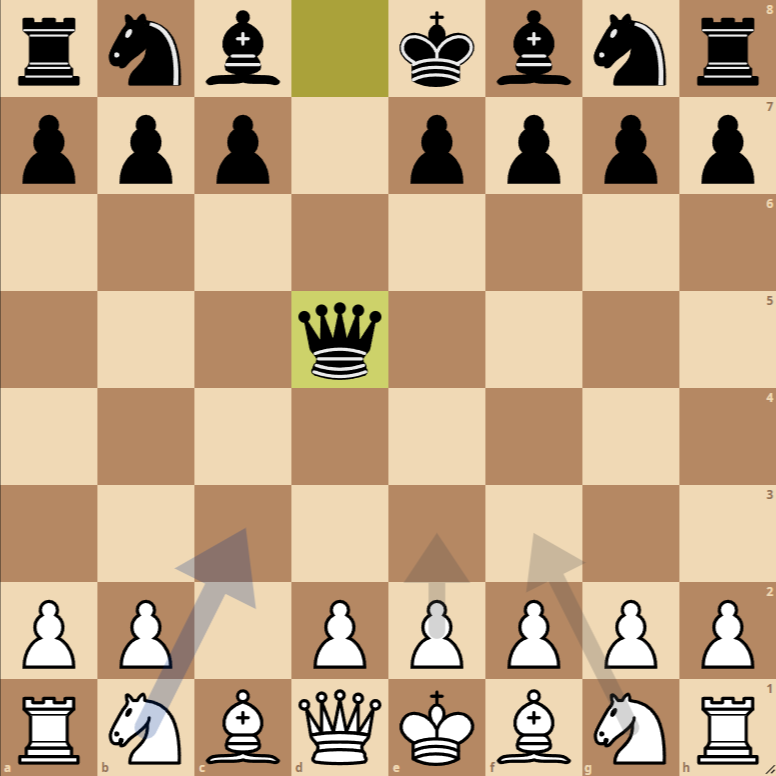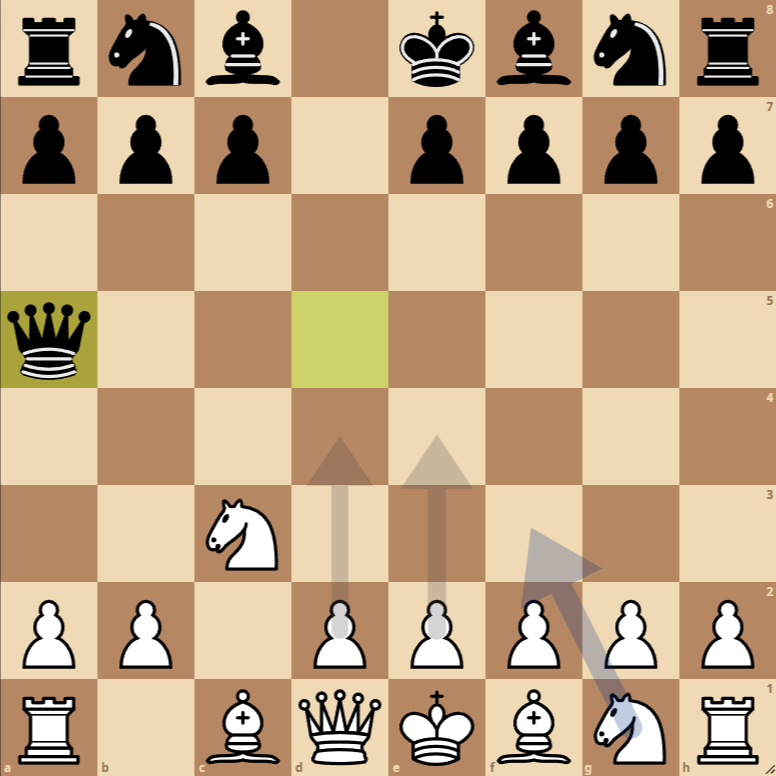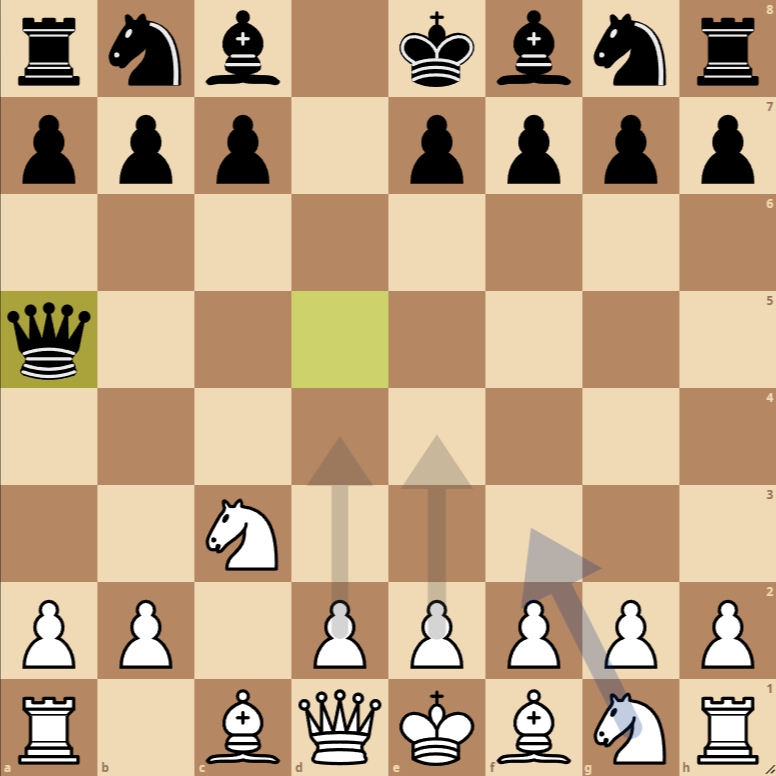How to Play the English Opening: Scandinavian Defense, Malvinas Variation



- 1. c4: This initial move by White aims to control the center from the flank. The English Opening is flexible and paves the way for various pawn structures.
- 1… d5: Black responds aggressively, immediately challenging White’s control of the center. This move leads to more dynamic variations.
- 2. cxd5: White captures the pawn on d5. This exchange opens lines and activates the light-squared bishop.
- 2… Qxd5: Black recaptures the pawn with the queen. This move may seem risky, as it develops the queen early, but it aims to exert pressure in the center.
- 3. Nc3: White develops the knight, threatening the Black queen and preparing to control the center.
- 3… Qa5: The Black queen retreats to a safer square, maintaining some pressure and preparing for future developments.
Variations of the English Opening: Scandinavian Defense, Malvinas Variation
Variation 1: 3… Qd8
In this variation, the Black queen retreats to its original position. This move is more conservative and aims for a reorganization of Black’s pieces without compromising the queen too early in the game.
Variation 2: 3… Qf5
This is a more active move for the queen. With 3… Qf5, Black places the queen in an offensive position, targeting both the king’s side and the center. Although risky, it can lead to dynamic play.
English Opening: Anglo-Scandinavian Defense, Malvinas Variation
The opening we are analyzing starts with a sequence of moves that leads to an interesting variation in the English Opening. White’s initial move 1. c4 signals the English Opening, a flexible choice that indirectly controls the center of the board. Black responds with 1… d5, entering the Anglo-Scandinavian Defense. This response is aggressive and aims to challenge White’s center control.
Initial Moves:
1. c4 d5
cxd5 Qxd5
Nc3 Qa5
In this position, White has captured the central pawn of Black, and Black has responded by recapturing the pawn with the queen, a move that, while regaining material, exposes the queen early.
Strategy and Tactics:
For White:
- Development and Center Control: White should focus on the rapid development of their pieces, especially knights and bishops. The move 3. Nc3 already develops a piece and pressures the center.
- Exploiting the Exposure of the Black Queen: The Black queen on a5 can be a target. Moving the knight to f3 (Nf3) not only develops a piece but also prepares castling and can potentially create threats to the Black queen.
- Preparing a Center Breakthrough: The move d4 not only gains space but also opens lines for other pieces, such as the king’s bishop and queen.
- Flexibility with g3: Playing g3 prepares the king’s bishop fianchetto, which can result in strong long-term control of central squares and a solid pawn structure.
For Black:
- Counterplay in the Center: Although the queen is active early, Black can look to play c5 or e5 at some point to challenge White’s central control.
- Rapid Development: It’s crucial for Black to quickly develop their minor pieces and seek opportunities to castle, ensuring the king’s safety.
- Pressure on the Queen’s Side: By keeping the queen on a5, Black can exert pressure on White’s queen’s side, possibly preparing actions like …Qb4.
Conclusion:
This variation of the English Opening presents interesting opportunities for both sides. White has several viable options to continue development, while Black must be cautious but also actively seek counterplay. The game is in a balanced state, with tactical and strategic possibilities for both players.

